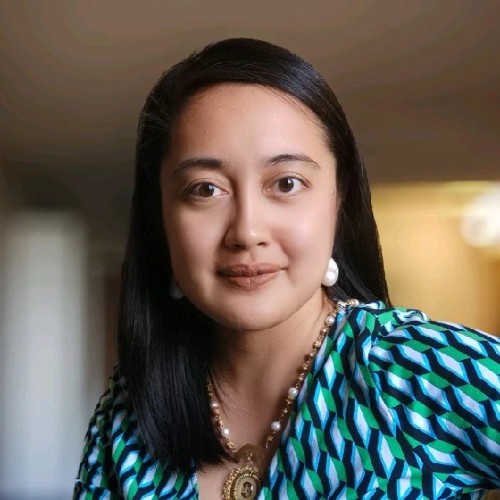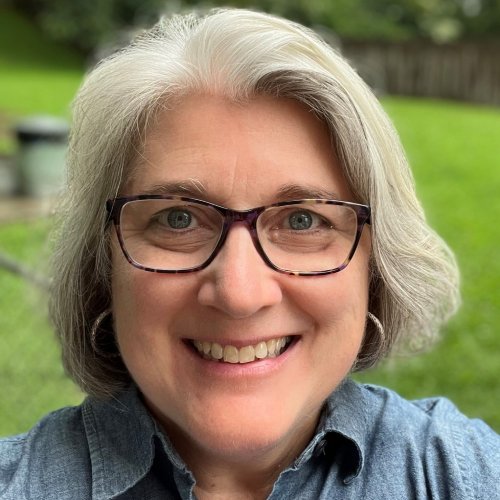Student consultants help Bunge manage complexity
- October 21, 2025
- By Suzanne Koziatek
- 6 minute read

Bunge is a global leader in agribusiness, food, and ingredients, connecting farmers to consumers by sourcing, processing, and distributing agricultural commodities and food products worldwide.
It’s a complex business, susceptible to disruptions such as weather, transportation breakdowns, and currency fluctuations. For its strategic global customers, managing those risks and keeping prices low and predictable is a vital aspect of Bunge’s value to them.
Now the St. Louis-based company has a powerful new tool to help navigate that complexity, thanks to the work of students from Olin’s Boeing Center for Supply Chain Innovation. A multidisciplinary consulting team created algorithms that analyze data about commodity markets and customer demand to help Bunge manage commodity prices, availability, and shipments across global markets.
“They developed this machine learning tool — they actually call it a ‘magic button’ — for us,” said Alzana Jakupovic, MBA 2022, who manages the global account program for one of Bunge’s largest customers. She said the tool is currently operational and actively utilized in managing the customer’s worldwide account.
It’s an example of the analytical firepower the Boeing Center brings to bear on its corporate partners’ toughest challenges. It’s also a window into how working experiential learning projects can lead to bigger things for students: Jakupovic was first introduced to Bunge as a member of a Boeing Center student team five years ago.
“Companies are constantly looking for new talent coming out of graduate schools,” said Andy Sample, associate director of the Boeing Center. “This is a way for companies to preview top-tier talent that is going to be on the job market within months. That’s the case with Alzana. She’s a great example of a company doing a project with us, previewing the talent, and then transitioning that into a hire.”
The value of membership
Bunge was able to tap into Olin’s student talent pool because of its ongoing membership on the Boeing Center Advisory Board. Paid corporate memberships include opportunities to engage in projects with Boeing Center students, under the supervision of Olin professors.

Panos Kouvelis
“Working with our member companies, we address real issues of top importance to them, and we deliver results that they can immediately use in terms of analysis and decision support,” said Panos Kouvelis, the Boeing Center’s director and Emerson Distinguished Professor of Supply Chain, Operations, and Technology.
Brett Caplice, vice president of North American refined and specialty oils for Bunge, has worked with student teams since Bunge joined the advisory board in 2020. He noted that students bring a fresh perspective that is less influenced by the company’s existing ways of doing things.
“They come at it from a different angle, a different approach — maybe they ask different questions,” he said. “It’s always a fun part of the process and helps us challenge our own thinking.”
Based on her earlier experience on a Boeing Center team, Jakupovic thought students might apply that fresh perspective to management of one of Bunge’s key accounts. It involves sourcing vegetable oil for the customer’s restaurants and secondary suppliers across dozens of markets, with every leg of those trips providing a potential source of variability.
Jakupovic said Bunge’s goal is to lock in advantageous prices for the customer on the global commodities market.
“This is undeniably a highly complex account for Bunge,” she said. “We’re entrusted with their risk management across all these markets. We foster a proactive, integrated, and holistic approach to managing all types of risks. The client maintains a hands-off approach, asserting, ‘We trust you, you’re the oil experts.’”
The challenge Bunge placed before the student consulting team was to analyze the data and come up with a solution to achieve the customer’s goals — a solution that can change with the changing market.
“It’s not merely about, ‘Here’s the data and analyze it,’” Jakupovic said. “The requirement was to develop a tool that allows for continuous improvement.”
As far as Boeing Center projects go, “in terms of complexity, it was definitely up there,” said Evan Dalton, manager of educational technology and digital marketing for the Boeing Center.

When the idea was first explained to the Bunge student team, “There was a moment of silence, because it didn't sink in immediately, and we were all looking at each other,” said team member Stacy Alcantara-Garcia, MBA 2025. “Then Professor Kouvelis started helping us make sense of it.”
That kicked off a series of meetings with Jakupovic and other Bunge employees, as well as regular team meetings to shape the project. “Little by little, the more we spoke with Bunge, and the more we brainstormed with each other and with a professor, and also with our technical advisors (from the McKelvey School of Engineering), it started to make sense,” Alcantara-Garcia said.
In the end, the solution had two parts.
First was a series of algorithms that used inputs of global commodities market pricing and historical sales data across many diverse European markets. “Due to extensive scope, three distinct algorithms were required for these markets, as a single algorithm could not accommodate the entire complexity,” Jakupovic said.
The second part was a dynamic Excel workbook that houses all this information, allowing an account manager to maintain an up-to-date picture of the customer’s market positions and to accurately forecast future changes.
To arrive at this solution, the Boeing Center team was similarly divided, Alcantara-Garcia said.
“We had a team that handled more of the hedging side — coming up with a strategy to hedge against foreign exchange risk,” she said. “And then there was another team that dealt with dynamic forecasting. Both were important parts of the project.”
She and another MBA student served as corporate ambassadors — project team leaders who could also translate the highly technical work when speaking with the team’s clients.
That technical work was done by specialized master’s students, led by the team’s technical advisors. The team also included two undergraduate computer science students and a PhD student, Dalton said. “We needed to throw the kitchen sink at this one.”
Bunge executives were “extremely impressed” by the students’ final presentation, Jakupovic said.
“While Bunge has engaged with WashU projects for five years, they communicated that the innovative and comprehensive approach to this highly complex account demonstrated a level of excellence they had not previously witnessed,” she said.
Alcantara-Garcia said the team worried about properly describing the complex solution. “But when we started to explain it, and we saw the people's reactions — you know, they had this ‘eureka’ moment — that felt really good.”
In May, the Bunge project was named Project of the Year at the Boeing Center’s annual symposium.
Out of the classroom, into the world
Alcantara-Garcia, who earned her MBA in May, has since returned to her career with the Philippine Department of Foreign Affairs. She said her experience with the Bunge project gave her increased confidence in dealing with interdisciplinary teams. “Just putting those resources and people together, getting through that, really helped me.”
For Jakupovic and many students like her, real-world, experiential learning project like this one can be an entry point to a new company and career. Sample notes that he frequently sees these projects appear on students’ LinkedIn pages. But the knowledge gained is even more important than the cachet.
“Students can listen to lectures in class and look at a PowerPoint until they’re blue in the face,” he said. “But until they can go out and talk to executives in a real company with real problems, and apply those classroom teachings, I don't know if they're always going to make that great connection. That’s what these projects do; they’ll let them pull in the learning from the class and apply it to a real project with business implications.”
Kouvelis likens the projects to throwing students into the ocean after a lecture on swimming — with coaches and lifeguards to watch over them.
“Through our projects, students have an opportunity to see the strength of the knowledge they acquired in our programs in addressing complex operational and supply chain corporate problems that their future careers will require,” Kouvelis said. “Our supply chain programs, with the support of our center, its staff, and its engaged faculty, are proud to offer this very unique experience to our Olin students.”
Media inquiries
For assistance with media inquiries and to find faculty experts, please contact Washington University Marketing & Communications.
Monday–Friday, 8:30 to 5 p.m.
Sara Savat
Senior News Director, Business and Social Sciences
